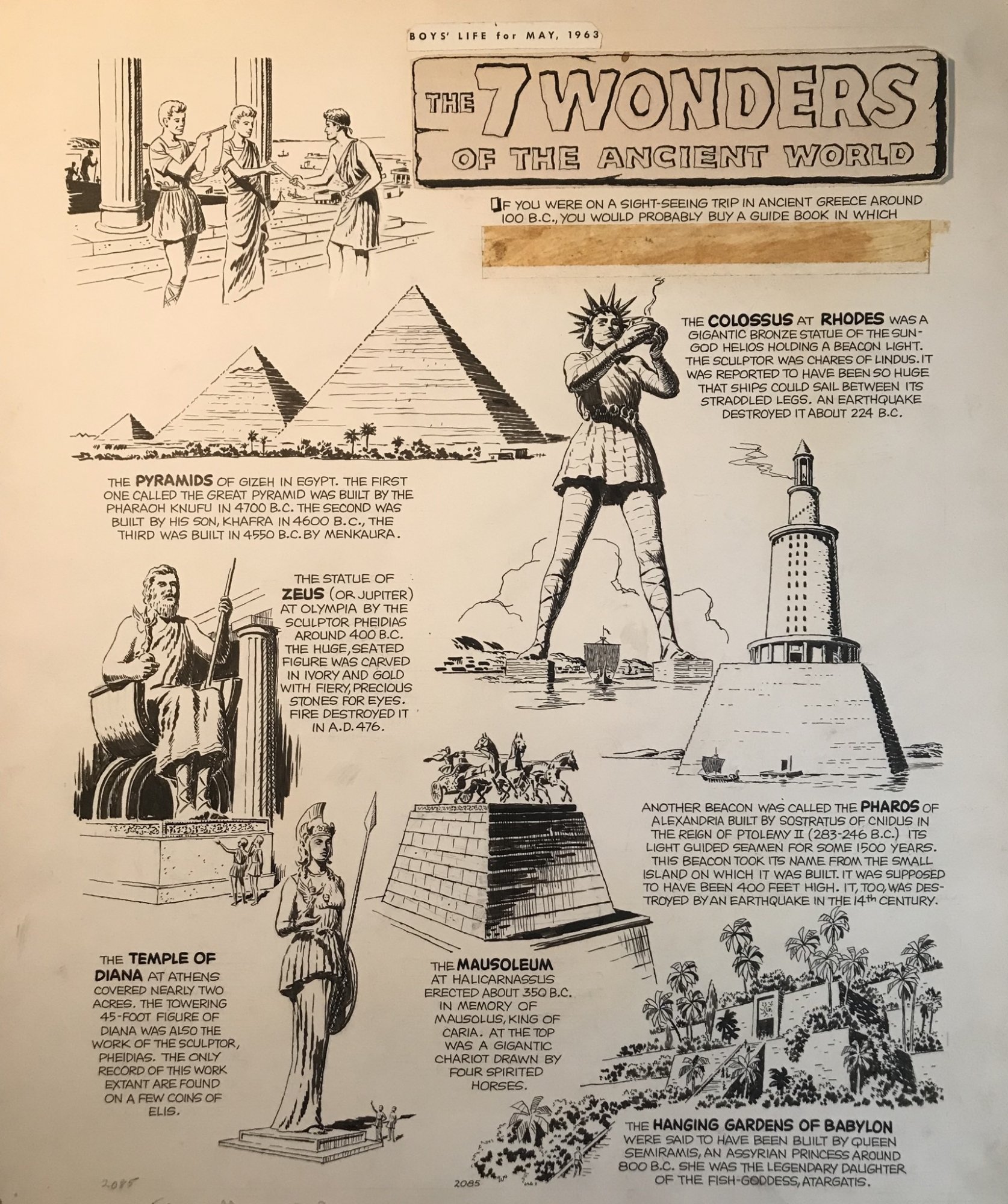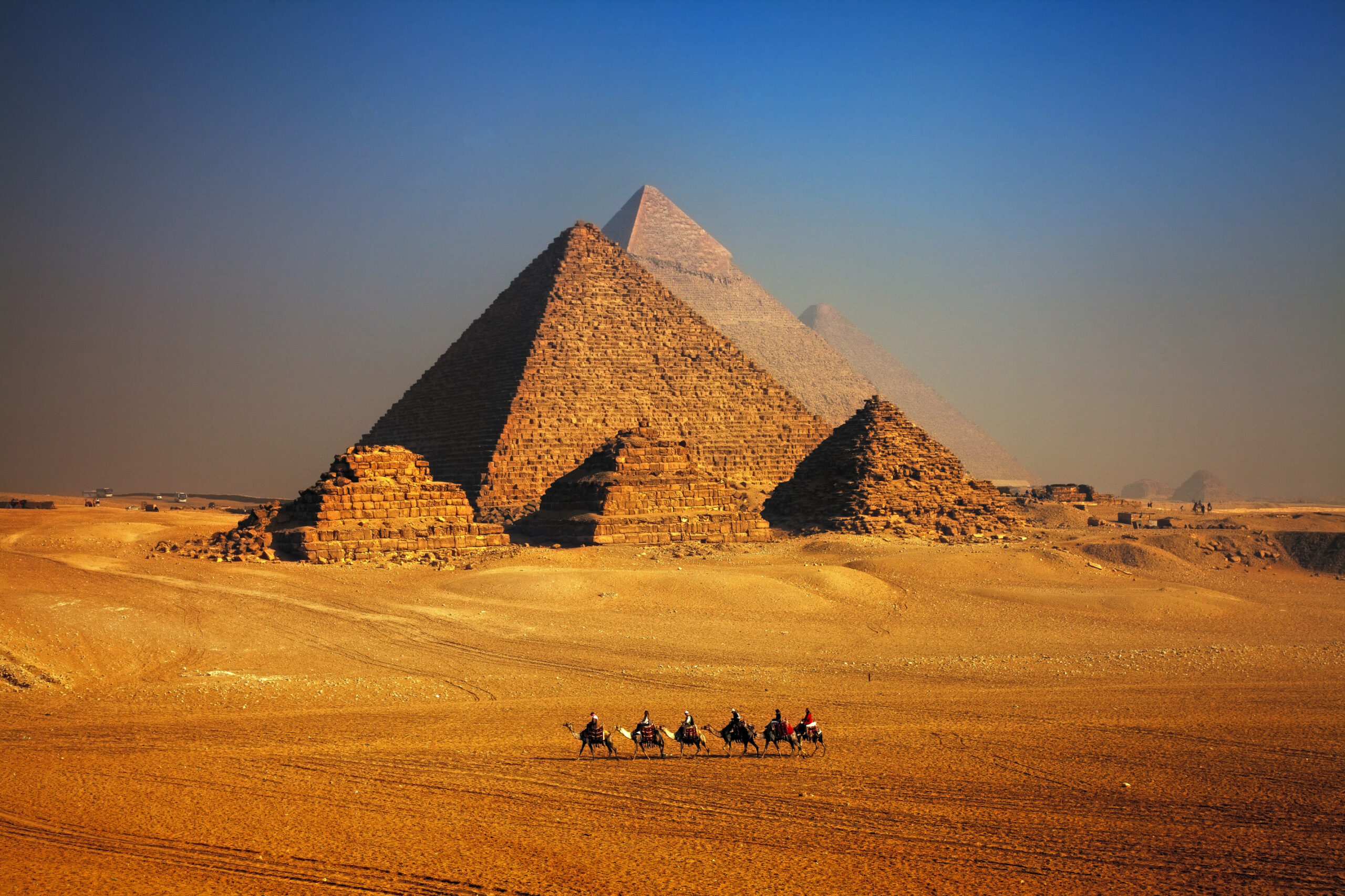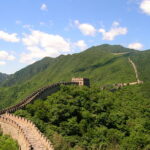
The Seven Wonders of the World or the Seven Wonders of the Ancient World (simply known as Seven Wonders) is a list of remarkable constructions of classical antiquity given by various authors in guidebooks or poems popular among ancient Hellenic tourists.


1. Pyramids of Giza (Egypt)
The Great Pyramid of Giza (also known as the Pyramid of Khufu or the Pyramid of Cheops) is the oldest and largest of the pyramids in the Giza pyramid complex bordering present-day Giza in Greater Cairo, Egypt. It is the oldest of the Seven Wonders of the Ancient World, and the only one to remain largely intact. Egyptologists conclude that the pyramid was built as a tomb for the Fourth Dynasty Egyptian pharaoh Khufu and estimate that it was built in the 26th century BC during a period of around 27 years. Initially standing at 146.5 metres (481 feet), the Great Pyramid was the tallest man-made structure in the world for more than 3,800 years.



2. Hanging Gardens of Babylon
Thought to be an ascending series of tiered gardens containing all manner of trees, shrubs, and vines. Exact location unknown, generally belonging to Queen Sammu-ramat, King Nebuchadrezzar II, or the Assyrian king Sennacherib. The Hanging Gardens of Babylon were one of the Seven Wonders of the Ancient World listed by Hellenic culture. They were described as a remarkable feat of engineering with an ascending series of tiered gardens containing a wide variety of trees, shrubs, and vines, resembling a large green mountain constructed of mud bricks. It was said to have been built in the ancient city of Babylon, near present-day Hillah, Babil province, in Iraq. The Hanging Gardens' name is derived from the Greek word κρεμαστός (kremastós, lit. 'overhang, which has a broader meaning than the modern English word "hanging" and refers to trees being planted on a raised structure such as a terrace.



3. Statue of Zeus at Olympia
A large sculpture of the Greek god on his throne, made about 435 BCE by Phidias of Athens. The Statue of Zeus at Olympia was a giant seated figure, about 12.4 m (41 ft) tall, made by the Greek sculptor Phidias around 435 BC at the sanctuary of Olympia, Greece, and erected in the Temple of Zeus there. Zeus is the sky and thunder god in ancient Greek religion, who rules as king of the gods of Mount Olympus. The statue was a chryselephantine sculpture of ivory plates and gold panels on a wooden framework. Zeus sat on a painted cedarwood throne ornamented with ebony, ivory, gold, and precious stones. It was one of the Seven Wonders of the Ancient World.


4. Temple of Artemis at Ephesus
Also known as the Temple of Diana. A structure famous for its imposing size was built in 550 BCE to honor Artemis, the Greek goddess of the hunt. The Temple of Artemis or Artemision (Greek: Ἀρτεμίσιον; Turkish: Artemis Tapınağı), also known as the Temple of Diana, was a Greek temple dedicated to an ancient, local form of the goddess Artemis (associated with Diana, a Roman goddess). It was located in Ephesus (near the modern town of Selçuk in present-day Turkey). By 401 AD it had been ruined or destroyed. Only foundations and fragments of the last temple remain at the site.



5. Mausoleum of Halicarnassus
Monumental tomb built in 4th century BCE for the King Mausolus, and his sister-wife Artemisia II of Caria. The Mausoleum at Halicarnassus or Tomb of Mausolus[a] (Ancient Greek: Μαυσωλεῖον τῆς Ἁλικαρνασσοῦ; Turkish: Halikarnas Mozolesi) was a tomb built between 353 and 350 BC in Halicarnassus (present Bodrum, Turkey) for Mausolus, a native Anatolian from Caria and a satrap in the Achaemenid Empire, and his sister-wife Artemisia II of Caria. The structure was designed by the Greek architects Satyros and Pythius of Priene. Its elevated tomb structure is derived from the tombs of neighbouring Lycia, a territory Mausolus had invaded and annexed circa 360 BC, such as the Nereid Monument.


6. Colossus of Rhodes
110 feet tall statue erected in the city of Rhodes, by Chares of Lindos in 280 BCE to honored the Greek sun god Helios. The Colossus of Rhodes (Ancient Greek: ὁ Κολοσσὸς Ῥόδιος, romanized: ho Kolossòs Rhódios Greek: Κολοσσός της Ρόδου, romanized: Kolossós tes Rhódou)[a] was a statue of the Greek sun-god Helios, erected in the city of Rhodes, on the Greek island of the same name, by Chares of Lindos in 280 BC. One of the Seven Wonders of the Ancient World, it was constructed to celebrate the successful defence of Rhodes city against an attack by Demetrius Poliorcetes, who had besieged it for a year with a large army and navy.



7. Pharos of Alexandria
the most famous lighthouse of the ancient world, It was world’s first lighthouse used mirrors to reflect sunlight for miles out to sea. Built for Ptolemy II of Egypt about 280 BCE on the island of Pharos off Alexandria.The Lighthouse of Alexandria, sometimes called the Pharos of Alexandria (/ˈfɛərɒs/; Ancient Greek: ὁ Φάρος τῆς Ἀλεξανδρείας, contemporary Koine Greek pronunciation: was a lighthouse built by the Greek Ptolemaic Kingdom of Ancient Egypt, during the reign of Ptolemy II Philadelphus (280–247 BC). It has been estimated to have been at least 100 metres (330 ft) in overall height. One of the Seven Wonders of the Ancient World, for many centuries it was one of the tallest man-made structures in the world.














